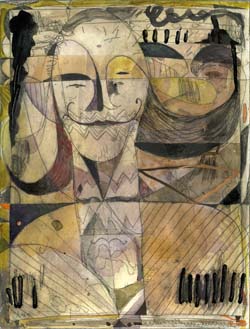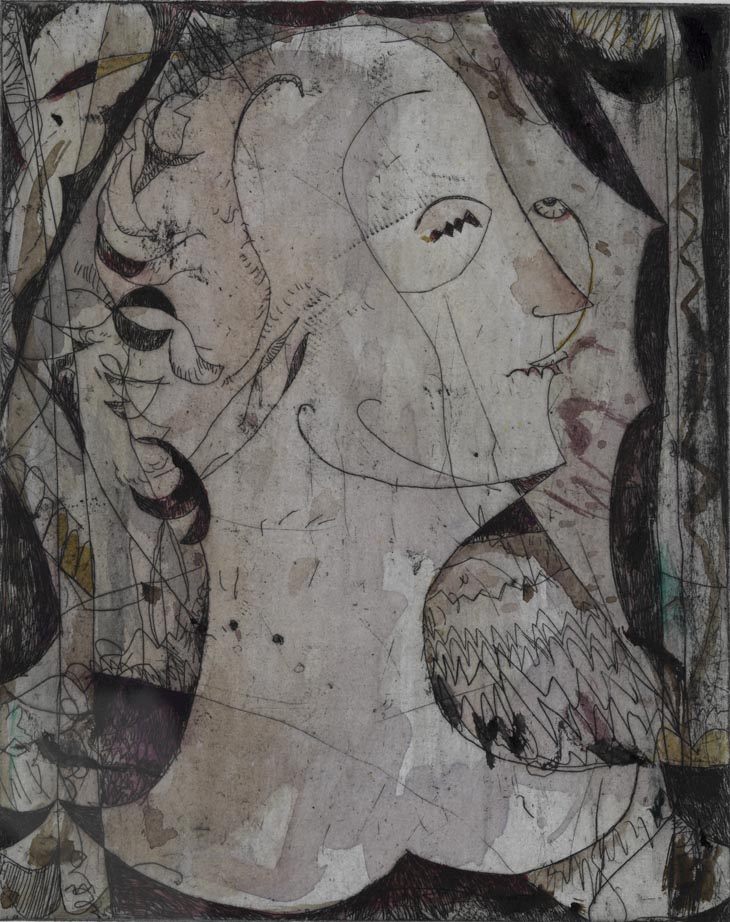
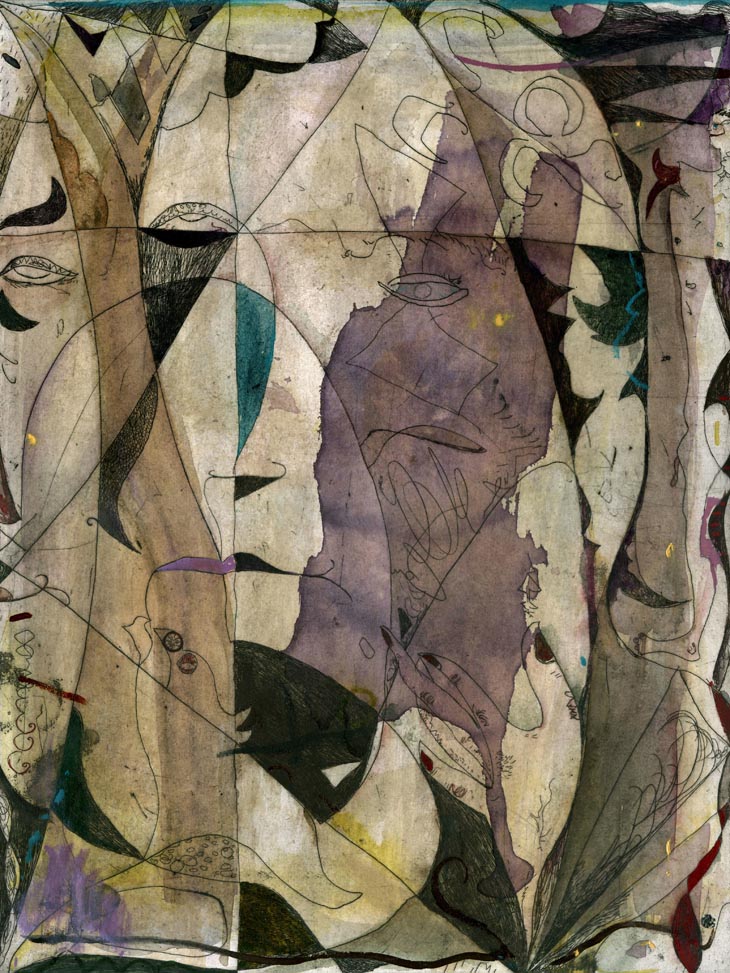
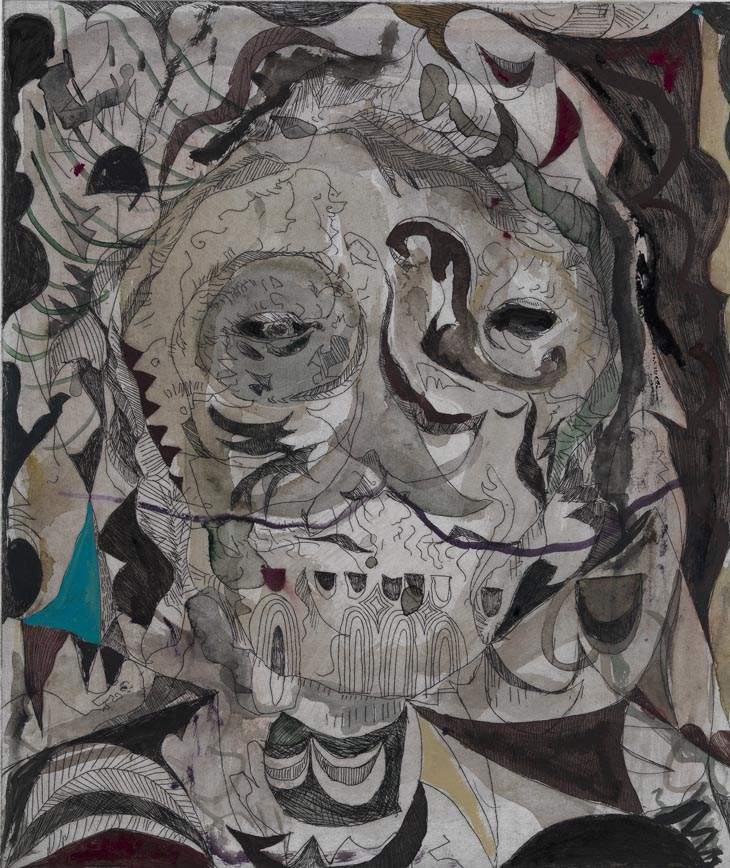
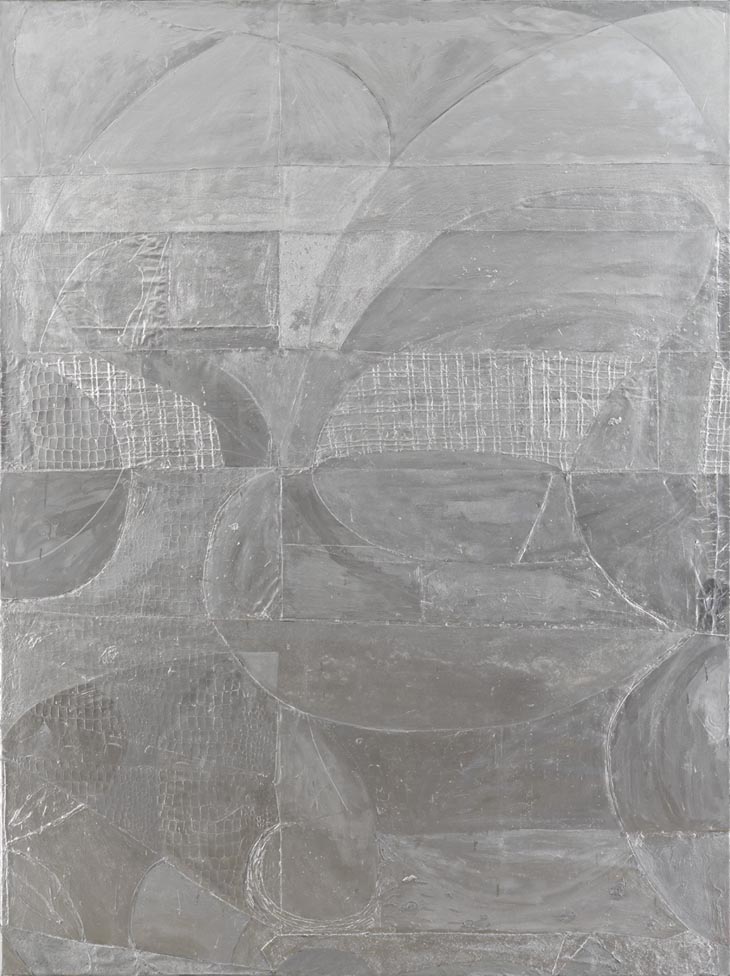
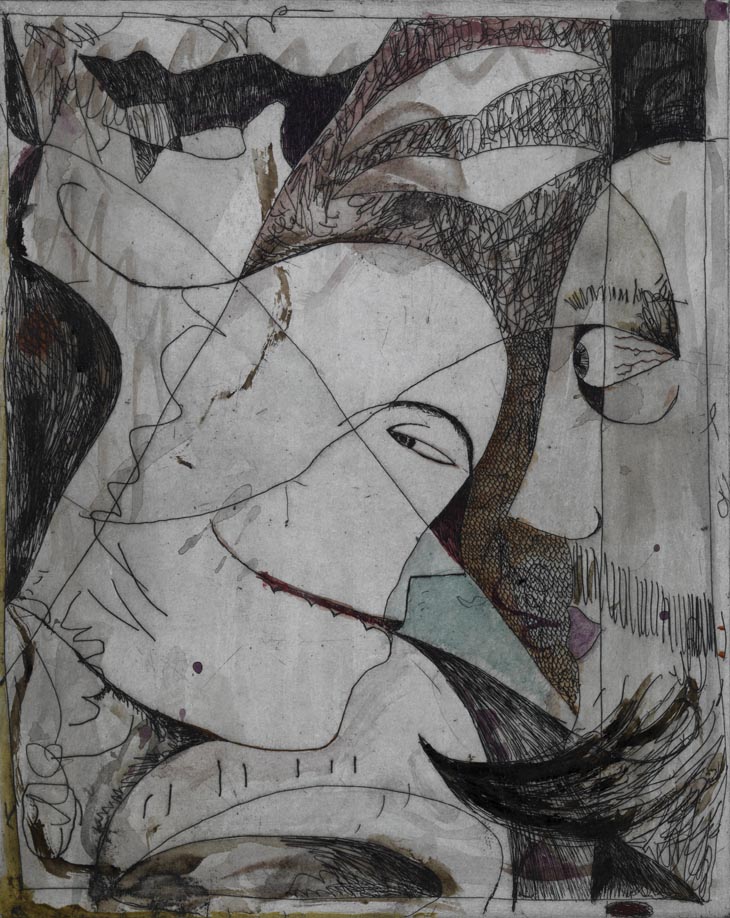
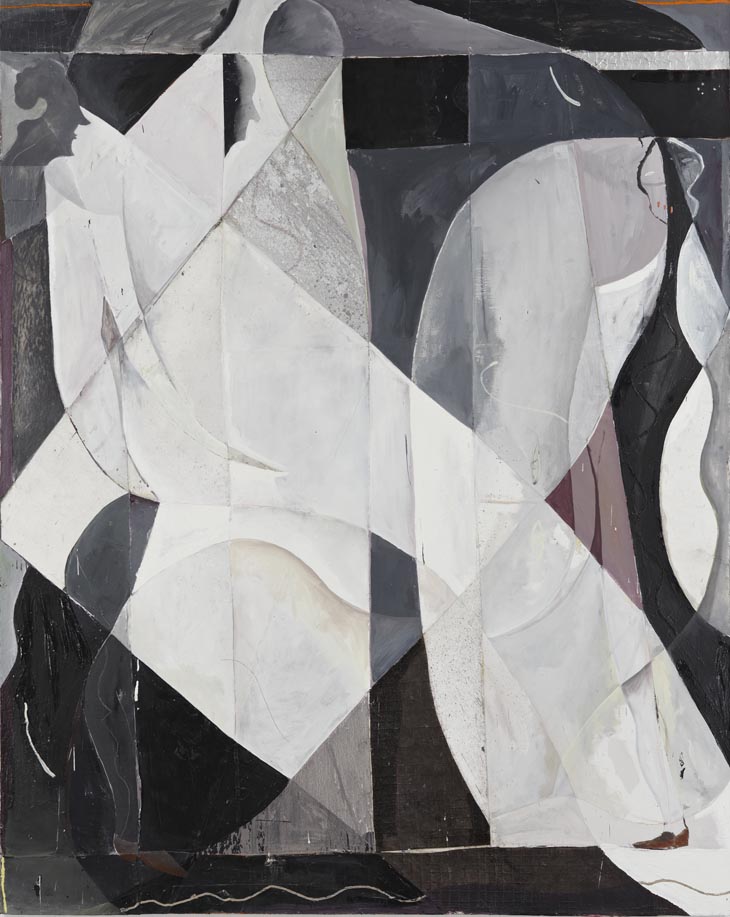
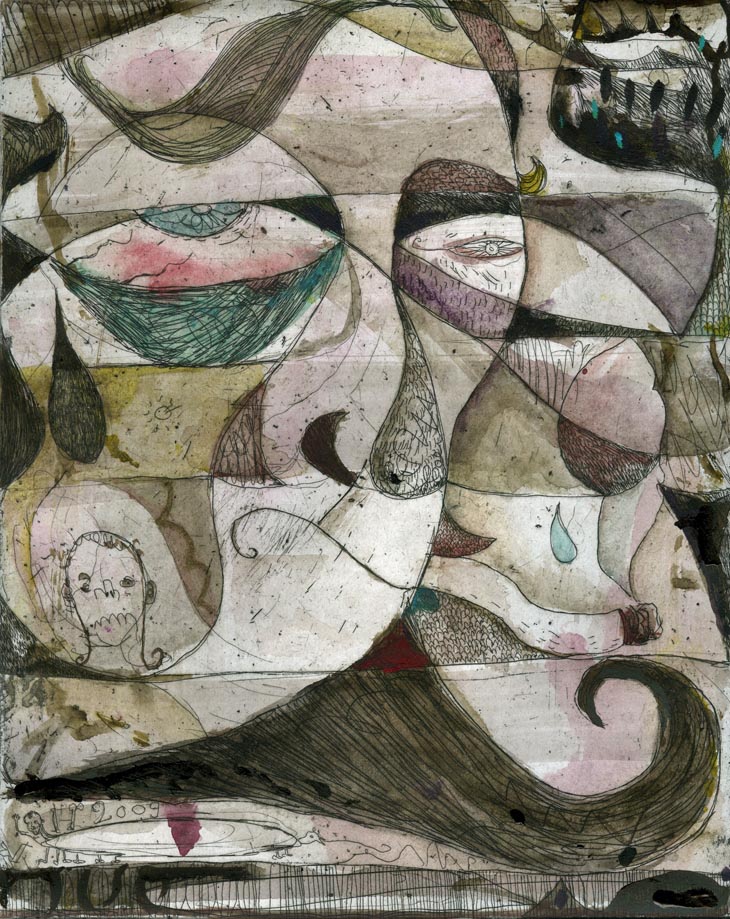

Volker Hueller
Volker Hueller’s large-format collaged canvases and smaller hand-coloured etchings engulf the viewer in a world where shapes and meaning are fragmented and interconnected to present an eerily abstract sense of portraiture. The monochromatic patchwork of textures in Sie Sind Unter Uns XII and the washed out tones of Drei Halunken Und Ein Halleluja’s geometric figuration (both 2009) articulate a strange tension: figuration is created and sustained by the abstract patterned shards cutting through the visual ground.
Stylised silhouettes of heads in profile taken from 1930s advertisements inhabit Drei Halunken Und Ein Halleluja with its angular and curved lines and soft, transparent hues. The overall pattern can be re-interpreted as something more than coolly assigned decorative motif: it seems to be a necessary spatially symbolic graphic which anchors the figurative elements, a sort of sine qua non in Hueller’s world. The whole composition is like a modernist-aware yin and yang, where each component in these pairings - darkness and light, figuration and non-representation - is part of the other.
Art history informs Hueller’s works, whether it might be echoes of Paul Klee’s fanciful abstractions, Antonin Artaud’s hallucinogenic, shamanistic ink drawings, Miró’s early surrealist works or Picasso’s harlequins and greyscale compositions, which in Hueller’s hands all coalesce into something new.
Portraiture, and the symbolic geometry of the face and head, is one of Hueller’s central preoccupations. My portrait in the year 2080 (2007) is both whimsical and dark with its nebulous combination of filled in and empty spaces, its squiggly hairs and wrinkles, blackened teeth and nervous crosshatching. Its ostensive self-caricature sets up a dialogue with the imperfection and intimacy of outsider and avant-garde paper-based art. This visual thread is continued in the raw doodling and associative, prism-like compositions of Puppetmaster, Wohin-Sehen, Rauch Im Aug, Elegy, and Untitled (Haupt) (all 2009).







